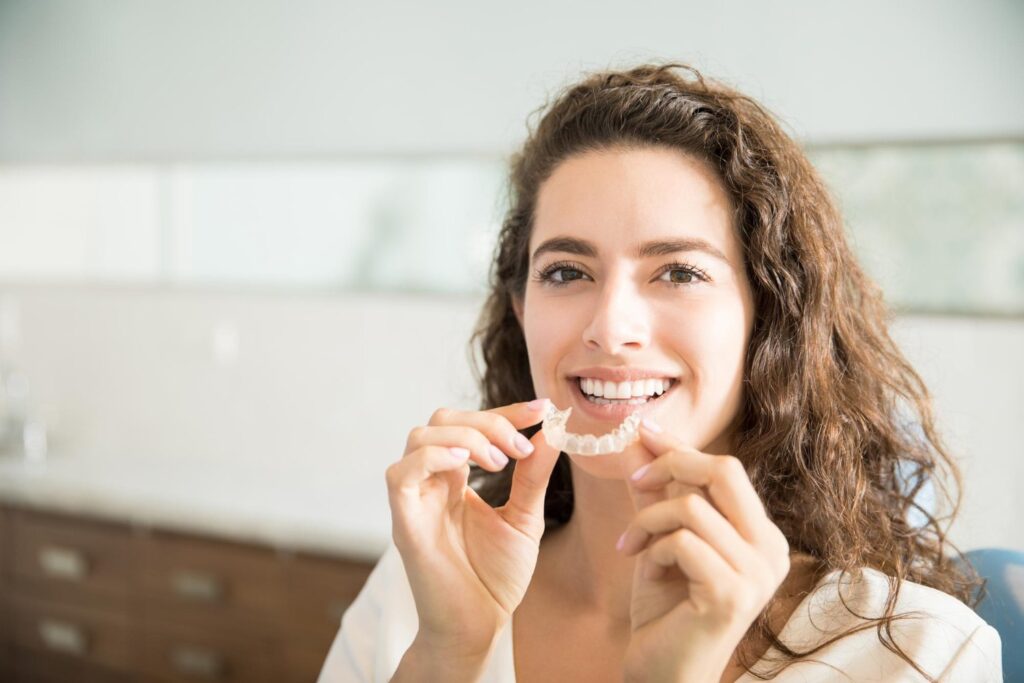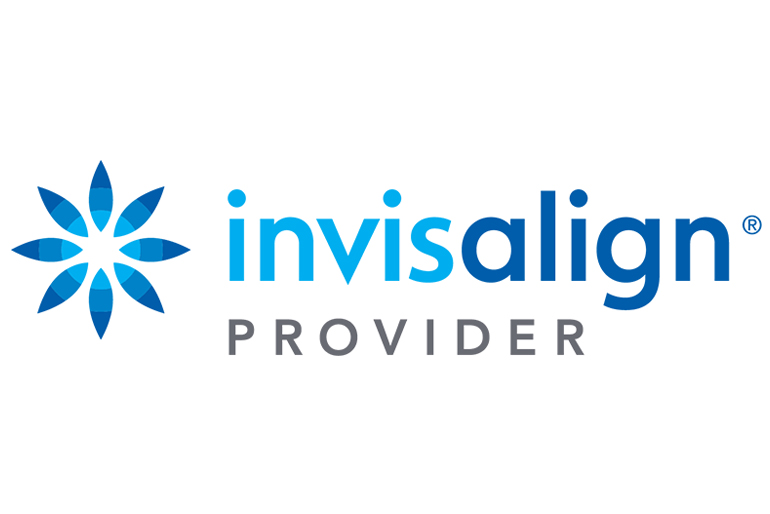
If you’ve been scrolling through social media lately, you’ve probably noticed more and more people sharing their smile transformation journeys with those nearly invisible braces.
Maybe you’ve caught yourself wondering, “Could invisalign actually fix my crooked teeth too?” or “Am I too old to straighten my smile?”
You’re asking all the right questions, and I’m here to give you honest, straightforward answers about what Invisalign can and cannot do for your specific smile concerns.
By the end of this article, you’ll have a clear understanding of whether clear aligner treatment might be the solution you’ve been looking for.
What Exactly Is Invisalign and How Does It Work?
Let’s start with the basics. Invisalign uses a series of custom-made, clear plastic trays called aligners to gradually move your teeth into better positions. Think of it like a gentle, constant nudge that guides your teeth exactly where they need to go over time.
Each set of aligners is worn for about one to two weeks before you switch to the next set in the series. The magic happens because each new tray is slightly different from the previous one, creating controlled pressure that encourages your teeth to shift bit by bit.
Most people wear their aligners for 20-22 hours per day, removing them only for eating, drinking, brushing, and flossing.
The entire process typically takes anywhere from 6 months to 2 years, depending on how complex your case is and how well you stick to wearing your aligners as directed. The beauty of this system is that it’s incredibly precise – your entire treatment is mapped out using advanced 3D technology before you even start.
What Smile Issues Can Invisalign Actually Fix?
Now here’s where things get really interesting. Invisalign has come a long way since its early days and can now address many orthodontic issues that once required traditional metal braces. Let me break down what clear aligners can tackle:
Crowded Teeth If your teeth are fighting for space in your mouth, creating that overlapped, jumbled look, Invisalign can gradually create room and guide each tooth into its proper position. This is one of the most common reasons people choose clear aligner treatment.
Gaps and Spaces Those annoying gaps between your teeth – whether they’re tiny spaces or more noticeable separations – can often be closed effectively with Invisalign. The aligners work to bring teeth closer together while maintaining proper alignment.
Overbite Correction When your upper teeth stick out too far over your lower teeth, creating that “buck tooth” appearance, Invisalign can often help pull those teeth back and improve your bite relationship.
Underbite Issues While more challenging than overbites, mild to moderate underbites (where your lower teeth sit in front of your upper teeth) can sometimes be corrected with clear aligners, especially when combined with other treatments.
Crossbite Problems If some of your upper teeth sit inside your lower teeth when you bite down, creating an uneven bite pattern, Invisalign may be able to help align things properly.
Open Bite Situations When your front teeth don’t touch when you bite down, leaving a gap, certain types of open bites can be addressed with clear aligner therapy.
When Invisalign Might Not Be Your Best Option
I want to be completely honest with you clear aligners aren’t magic wands that can fix every smile concern. There are definitely situations where traditional braces or other orthodontic treatments might be more effective:
Severe Crowding or Spacing If your teeth are extremely crowded or you have very large gaps, you might need more aggressive treatment than what aligners can provide. Sometimes tooth extractions or other procedures are necessary first.
Complex Bite Issues Serious jaw alignment problems or severe overbites and underbites often require more intensive treatment approaches. Your orthodontist might recommend traditional braces or even jaw surgery for these situations.
Rotated or Tilted Teeth Teeth that are severely rotated or tilted at unusual angles can be challenging for aligners to move effectively. The smooth plastic trays sometimes can’t get the grip needed for these complex movements.
Compliance Concerns Here’s the thing Invisalign only works if you actually wear the aligners. If you know you’re forgetful or might be tempted to leave them out frequently, traditional braces might give you better results since they’re working 24/7.
The Real Experience: What to Expect During Treatment
Let me paint you a realistic picture of what your Invisalign journey might look like, because it’s important to have accurate expectations going in.
The First Few Days When you get your first set of aligners, expect some discomfort and pressure. Your teeth are literally being asked to move, and they’re going to let you know about it! Most people describe it as a tight, achy feeling rather than sharp pain. Over-the-counter pain relievers and cold drinks can help during this adjustment period.
Speaking Changes You might notice a slight lisp or different feeling when talking for the first week or two. Don’t worry – this is completely normal and temporary. Your tongue just needs time to adjust to having plastic over your teeth.
Eating Adaptations One of the biggest adjustments is removing your aligners every time you eat or drink anything other than water. This means planning your meals and snacks more carefully, and always having your aligner case with you.
Oral Hygiene Requirements Your dental hygiene routine becomes more important than ever. You’ll need to brush and floss after every meal before putting your aligners back in. Some people find this actually improves their overall oral health habits!
Social Situations Most people find that others barely notice their aligners during normal conversation. However, you might feel self-conscious at first, especially during eating situations where you need to remove them.
Factors That Influence Your Treatment Success
Several factors can impact how well Invisalign works for your specific situation:
Your Age and Oral Health While there’s no upper age limit for orthodontic treatment, younger patients often see faster results because their bones are still developing. However, healthy adults can achieve excellent results too – it might just take a bit longer.
Compliance Level This cannot be overstated – wearing your aligners for the recommended 20-22 hours per day is crucial for success. Skipping hours here and there can significantly extend your treatment time or compromise your results.
Starting Severity Minor crowding and spacing issues typically respond faster and more predictably than complex bite problems or severely rotated teeth.
Professional Expertise Not all providers have the same level of experience with clear aligner treatment. Choosing an orthodontist or dentist with extensive Invisalign experience can make a significant difference in your outcome.

Making the Decision: Is Invisalign Right for You?
Here are some questions to ask yourself as you consider whether clear aligner treatment might be your path to a better smile:
Do you have mild to moderate orthodontic issues rather than severe problems? Are you committed to wearing removable appliances consistently? Do you prefer a more discreet treatment option? Are you willing to be more mindful about your eating and drinking habits?
If you answered yes to most of these questions, Invisalign could be an excellent choice for your smile transformation.
Taking Your Next Steps
If you’re intrigued by the possibility of straightening your teeth with clear aligners, your next step should be scheduling a consultation with an experienced provider.
During this appointment, they’ll evaluate your specific concerns, take digital scans or impressions of your teeth, and create a customized treatment plan.
Many providers offer free consultations and can show you a digital preview of what your results might look like. This gives you a chance to see the potential outcome and decide if the investment is worth it for you.
Remember, orthodontic treatment is a significant commitment of both time and money, so it’s important to choose a provider you trust and feel comfortable with.
Don’t hesitate to ask questions about their experience, success rates, and what happens if you’re not satisfied with your results.
Your Smile Transformation Awaits
The question “Can Invisalign fix my smile?” doesn’t have a simple yes or no answer – it depends entirely on your individual situation, goals, and commitment level. What I can tell you is that millions of people have successfully transformed their smiles with clear aligner treatment, and the technology continues to improve every year.
If you’ve been hiding your smile or feeling self-conscious about crooked teeth, it’s worth exploring whether Invisalign might be the solution you’ve been looking for. Your confidence and happiness are worth the investment, and the best time to start is now.
Take that first step and schedule a consultation. You might be surprised to discover that the straight, beautiful smile you’ve always wanted is more achievable than you ever imagined.




